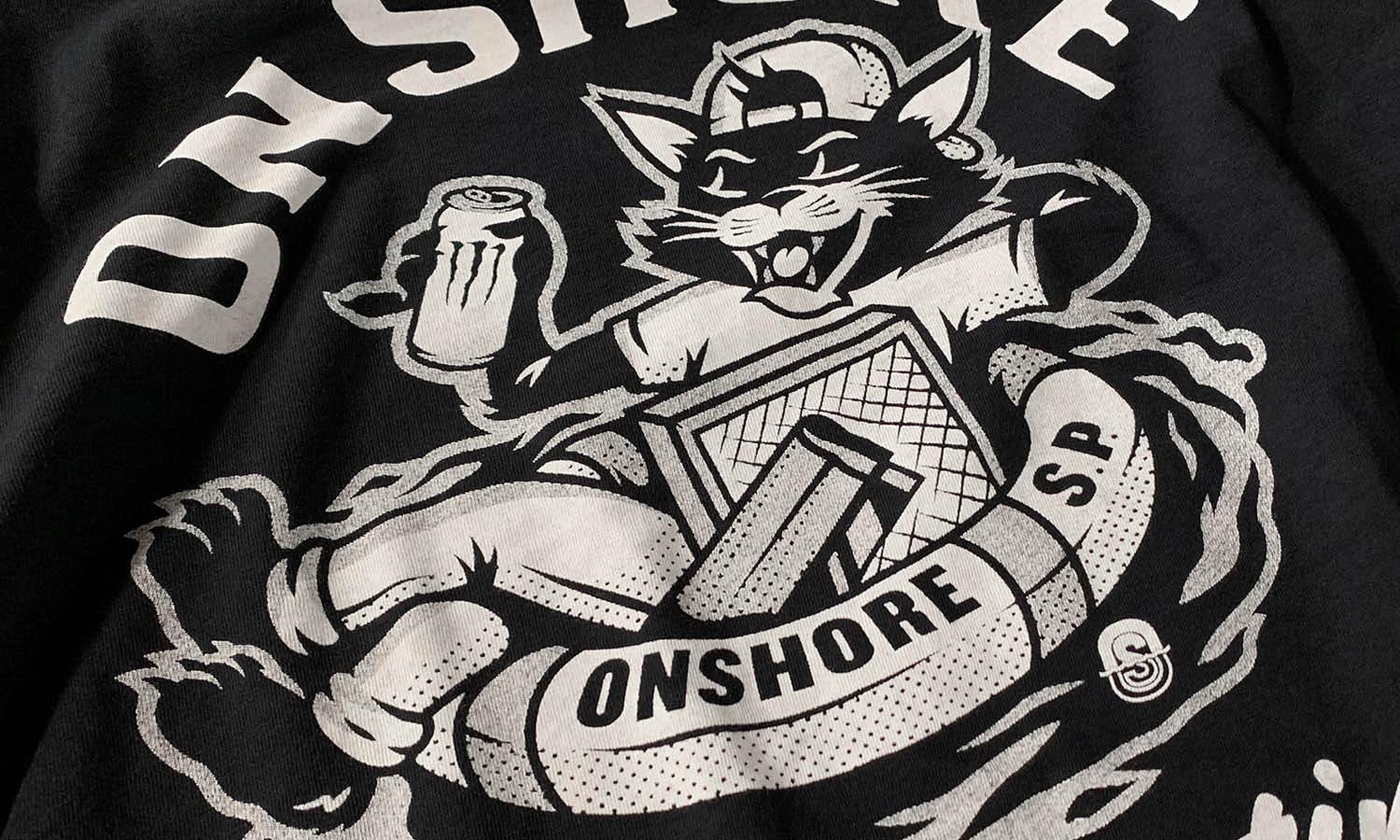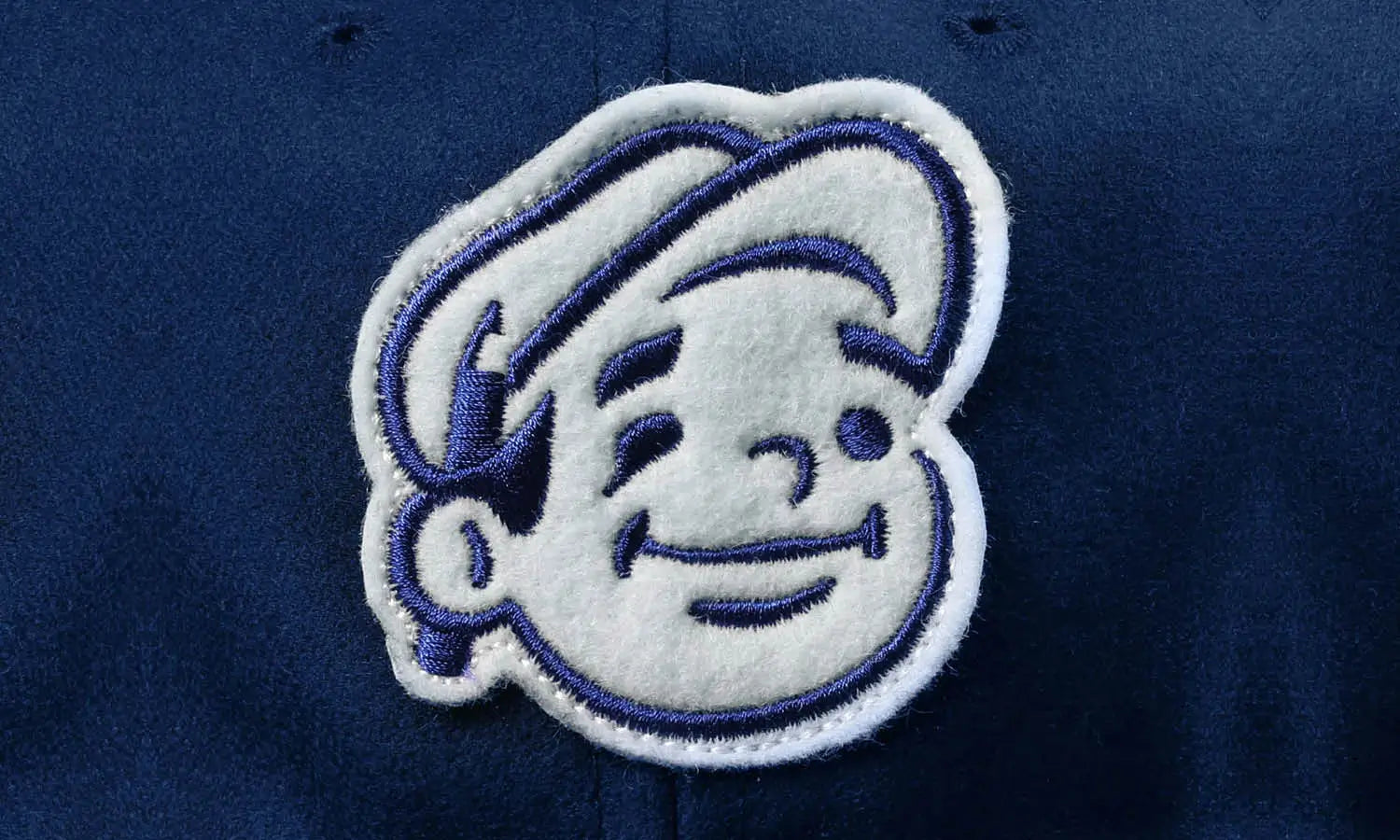How to Print Logo Designs on Spandex

Source: Matheus Palma, Limits | Branding, Behance, https://www.behance.net/gallery/123391949/Limits-Branding
Printing logo designs on spandex presents unique challenges and opportunities for designers. As a fabric favored for its impressive stretchability and comfort, spandex is a popular choice in the world of sportswear and activewear. The key to successful printing lies in understanding the fabric’s properties, choosing the right inks, and employing the most effective printing techniques to ensure durability and clarity.
This guide aims to equip you with the knowledge and skills necessary to effectively print your creative logos on spandex garments. We’ll explore the essential steps from preparing the fabric and selecting the best ink types to the finishing touches that ensure your design stands out and lasts long. Whether you are looking to print team uniforms, personalized workout gear, or fashion items, the ability to print on spandex opens up a world of possibilities for innovative designs and functional apparel.
With careful consideration of the material’s behavior under stretch and the right approach to the printing process, your logo designs can maintain their visual impact and integrity, even under the rigorous conditions of active wear use.
Understand Spandex Material
Spandex, a synthetic fabric renowned for its exceptional elasticity, is a staple in sportswear and stretchable apparel. Its unique properties require specific considerations when printing logo designs. Unlike more rigid textiles, spandex can stretch up to five times its original size, necessitating particular attention to the printing process to avoid distortion of designs. The fabric's resilience and ability to revert to its original form after stretching make it ideal for dynamic wear but pose challenges in maintaining the integrity of printed designs during use.
When preparing to print on spandex, understanding the interplay between the fabric's stretch and the applied design is crucial. It is important to account for the potential expansion of the fabric, ensuring that designs do not become warped or misshapen when the material is stretched. This requires careful planning and testing to achieve optimal results. Additionally, the smooth, often slick surface of spandex can affect ink adhesion, which must be considered when selecting printing techniques and preparing the material surface. Pre-treatment processes may be necessary to enhance ink adherence and ensure that the design remains vivid and sharp through repeated wear and washing.
Choose the Right Ink
Choosing the right ink is critical when printing logo designs on spandex, as the elasticity of the fabric can cause issues with cracking and durability if the incorrect type is used. Water-based inks are often recommended for spandex. These inks are formulated to endure the fabric's extensive stretchability without cracking, making them ideal for sportswear that demands both flexibility and durability.
Water-based inks also offer the advantage of being softer to the touch, which is essential for clothing items that are worn close to the skin, like leggings and athletic shirts. This type of ink integrates well with the fabric, ensuring that the print moves with the material and maintains its integrity even under constant stretching and movement.
In addition to selecting the right type of ink, it is crucial to consider the curing process. Properly curing the ink after application ensures that it sets correctly on the fabric and withstands regular use and washing. Different inks require different curing temperatures and times, and getting this right can make the difference between a print that fades and cracks quickly and one that lasts for the lifetime of the garment.
Lastly, environmental and health safety standards should be considered when selecting inks. Eco-friendly and skin-safe inks are increasingly important in consumer choices, especially for garments that come into direct contact with the skin. Ensuring compliance with these standards not only protects end-users but also enhances the brand's market appeal by aligning with consumer values toward sustainability and health.
Pre-Treatment Process
The pre-treatment process is an essential step when printing logo designs on spandex to ensure the highest quality output. This process involves preparing the fabric to accept ink more effectively, which is crucial due to the unique texture and elasticity of spandex. Pre-treatment enhances the adhesion of the ink to the fabric, which is vital for achieving vibrant and long-lasting prints.
Before applying any design, spandex fabric should be thoroughly cleaned to remove any impurities or residues that might interfere with ink adhesion. A pre-treatment solution can then be applied, typically consisting of a clear, liquid substance that slightly alters the surface tension of the fabric. This preparation helps the ink to bond better with the material and reduces the chances of the design washing out or fading over time.
The pre-treatment substance is generally applied via a spraying process, ensuring an even coating over the area where the logo will be printed. It’s important to allow the fabric to dry completely after pre-treatment before proceeding to the printing stage. Adequate drying prevents the fabric from becoming too saturated, which could cause issues such as ink bleeding or uneven distribution.

Source: Yahia Abdulazem, WOKENN F.C., Behance, https://www.behance.net/gallery/125333583/WOKENN-FC
Screen Printing Considerations
Screen printing on spandex requires careful consideration to adapt to the fabric’s stretchy nature. Choosing the right screen mesh count is crucial as it determines the amount of ink that passes through onto the fabric. A higher mesh count is often more suitable for detailed designs on spandex, as it allows for a finer distribution of ink, which can help maintain the design’s integrity during stretching.
Additionally, the squeegee used in the screen printing process must be in good condition and appropriately firm. This ensures that the ink is pushed through the mesh evenly and with sufficient force to adhere properly to spandex. The angle and pressure of the squeegee also play vital roles; a precise angle allows for the maximum ink application without oversaturating the fabric, which could lead to blurred designs.
It is also important to consider the curing of the ink. Spandex, being a heat-sensitive material, requires a careful approach to heat setting. The temperature must be high enough to cure the ink but not so high as to damage the fabric. Controlled drying ensures that the ink sets correctly and the print remains vibrant and durable.
Ink viscosity should also be adjusted according to the elasticity of the spandex to prevent the design from cracking when the fabric is stretched. Using inks specifically formulated for stretchable fabrics can yield the best results, enabling the printed design to stretch along with the garment without losing its aesthetic appeal.
Heat Press Technique
The heat press technique is a popular method for applying logo designs to spandex, particularly effective for small batches or highly detailed graphics. This technique uses a combination of heat and pressure to transfer a design from a special transfer paper onto the fabric. The key to a successful heat press application on spandex is the careful management of temperature and pressure to ensure that the design adheres well without damaging the fabric’s elasticity.
To begin, the logo must be printed onto heat transfer paper using a suitable ink that can withstand the heat press conditions. The spandex fabric should be pre-heated for a few seconds to remove moisture and wrinkles, which helps in achieving a smoother application. The transfer paper is then positioned on the fabric, and the heat press is applied for a specific time at a controlled temperature, usually between 375°F to 400°F.
It is crucial to use a heat press that allows for adjustable pressure settings. Too much pressure can cause the spandex to stretch or distort, whereas insufficient pressure may lead to incomplete transfer of the design. After pressing, the transfer paper is peeled off, a process that varies depending on whether the paper is hot-peel or cold-peel.
The heat press technique allows for vibrant, full-color designs that are durable and capable of stretching with the fabric, making it an excellent choice for printing logos on spandex sportswear and fashion items.
Dye Sublimation for Vibrant Colors
Dye sublimation is an exceptional printing technique for achieving vibrant and lasting colors on spandex fabrics. Unlike traditional printing methods, dye sublimation involves turning solid dye into gas without passing through a liquid form, embedding the dye deeply into the fabric fibers. This results in high-quality, durable prints that do not peel, crack, or fade, even under stress or after multiple washes.
The process begins with printing the desired logo design onto special sublimation paper using sublimation inks. The printed paper is then placed against the spandex fabric, and both are subjected to high heat and pressure using a heat press. The heat transforms the solid dye particles into gas, which penetrates the fabric and solidifies into the fibers as it cools.
One of the main advantages of dye sublimation on spandex is its ability to maintain the fabric’s stretchability and breathability. The dye does not create an additional layer on top of the fabric; instead, it becomes a part of the fabric itself. This feature is particularly important for athletic wear, where performance and comfort are key.
Furthermore, dye sublimation allows for intricate and multi-colored designs without the risk of the colors bleeding into each other. It’s an ideal choice for custom sportswear and other garments where bold, clear visuals are required. By using dye sublimation, designers can achieve eye-catching and resilient designs that enhance the appeal of spandex garments.
Test Print
Conducting a test print is a critical step in the process of printing logo designs on spandex. This preliminary stage allows for the evaluation of how a design interacts with the fabric under real printing conditions. It helps identify any potential issues with ink adherence, color accuracy, and design alignment, particularly important when working with stretchable materials like spandex.
To perform a test print, select a small section of the spandex fabric that is representative of the final product. This sample should be treated and prepared in exactly the same way as the final garment will be. Begin by applying the design using the chosen printing method, whether it be screen printing, heat transfer, or dye sublimation. Pay close attention to how the ink or dye adheres to the fabric and note any discrepancies in color or detail.
The test print should be subjected to the same post-printing processes as the final product, including curing and washing. This is to ensure that the print will withstand regular use and laundering. Examine the sample for any signs of ink fading, color bleeding, or distortion of the design, especially when the fabric is stretched.
By investing time in test printing, you can make necessary adjustments to the ink formulation, printing parameters, or artwork itself. This step is essential to ensure the highest quality and durability of the printed spandex garment, minimizing the risk of costly errors in larger production runs.

Source: Studio Miles, QUI ROULE, Behance, https://www.behance.net/gallery/157159399/QUI-ROULE
Adjust Artwork for Stretch
When printing logo designs on spandex, adjusting the artwork to accommodate the fabric’s stretch is crucial. Spandex garments are often stretched significantly when worn, and if the design is not adapted for this stretch, it can become distorted and lose its visual appeal.
To prevent these issues, designers must consider the elasticity of spandex during the design phase. This involves anticipating how the design will look when the fabric is both at rest and in use. Techniques such as scaling up the design, simplifying details, or using distortion grids can help compensate for the changes that occur when the fabric stretches.
Additionally, it is beneficial to use software tools that simulate the stretching of textiles to see how a design adapts to various levels of strain. This digital simulation can guide adjustments to the artwork before the printing process begins, reducing the trial-and-error aspect of designing for stretch fabrics.
Further, the orientation and placement of the logo should be strategically considered. Designs placed across areas of high tension (such as the hips or shoulders) might require additional adjustments to prevent distortion during movement.
Ultimately, adjusting artwork for stretch not only ensures the integrity and attractiveness of the design when applied to spandex but also enhances the overall wearability and functionality of the finished garment. This careful consideration is key to creating dynamic, visually appealing spandex apparel that stands the test of time and movement.
Curing the Ink
Curing the ink properly after printing on spandex is vital to ensure that the design remains vibrant and durable over time. This process involves setting the ink so that it becomes a permanent part of the fabric, capable of withstanding stretching and repeated washing. Incorrect or inadequate curing can lead to a print that cracks, fades, or peels off, compromising the quality and longevity of the garment.
For screen printing and direct-to-garment printing, the curing process typically requires the use of a heat press or a tunnel dryer. The temperature and duration of heat application depend on the type of ink used. For example, plastisol inks require a temperature of about 320°F (160°C) for 1 to 2 minutes to fully cure. It’s crucial to reach the ink’s entire thickness without overheating the spandex, as excessive heat can damage the fabric’s elasticity.
For heat transfer methods, the heat press used during the application also acts to cure the ink. Settings should be adjusted according to the manufacturer’s recommendations for the specific transfer paper and ink used.
It's important to test the cured print for durability by stretching the fabric and washing it under normal conditions. If the print maintains its integrity without cracking or fading, the curing process has been successful. Regular testing and adjustment of curing parameters are essential, especially when switching ink types or printing on different spandex blends.
Washing Instructions
Providing proper washing instructions is crucial for maintaining the quality of printed spandex garments. The longevity of the print and the fabric itself can be significantly affected by how the garment is laundered. To ensure that printed designs remain vibrant and intact, specific care guidelines should be followed.
It is recommended to wash printed spandex items in cold water, using a gentle cycle with mild detergents. Hot water and harsh chemicals can degrade the ink and the elasticity of the spandex, leading to faded colors and reduced fabric life. It's also advisable to turn the garments inside out before washing to protect the print from abrasion and excessive exposure to detergents.
Avoid using bleach or fabric softeners, as these can strip the ink from the fabric and alter the texture of the spandex. Similarly, printed spandex should not be dry cleaned, as the chemicals used in the process can be too harsh for both the ink and the fabric.
For drying, tumble dry on a low heat setting or allow the garment to air dry. High heat can cause the ink to reactivate and potentially smear or become tacky. If ironing is necessary, do not iron directly over the print. Instead, use a low heat setting and iron the garment inside out or place a protective cloth between the iron and the printed design.
Following these washing instructions will help extend the life of printed spandex garments, keeping them looking their best and ensuring that the logo designs stay sharp and clear through many uses.
Conclusion
Printing logo designs on spandex requires a careful approach to ensure both aesthetic appeal and durability. By selecting the right inks, properly preparing the fabric, and employing appropriate printing and curing techniques, you can create vibrant, long-lasting designs that enhance the functionality and style of spandex garments. Whether for sports apparel, fashion items, or promotional wear, mastering these techniques will allow you to expand your creative possibilities and deliver products that meet the demands of dynamic wear. Remember, the key to success lies in meticulous preparation and attention to detail throughout the printing process.
Let Us Know What You Think!
Every information you read here are written and curated by Kreafolk's team, carefully pieced together with our creative community in mind. Did you enjoy our contents? Leave a comment below and share your thoughts. Cheers to more creative articles and inspirations!














Leave a Comment